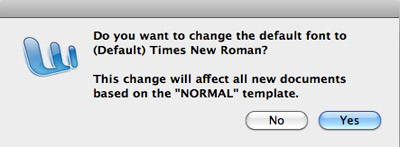
.svg/1200px-Microsoft_Office_Word_(2019–present).svg.png)
You will now be prompted to Restart Word in order for the change to take effect. This is useful if someone who only speaks a different language to the default is going to be using this copy of Word (of course, this is all changing this individual copy of Word and does not affect the document if it’s opened on different computers).
#Change microsoft word 2013 for mac default font download
You will notice that you can also change the display and screentip languages on this screen, as well as asking Word to prompt you if you need to download any special proofing tools. What else can I change in the language section? Now English (United States) has been added to the list – press the OK button at the bottom of the window: Once it’s selected, click the Add button:

Select your editing language from the list … Click on the dropdown arrow by Add additional editing languages: You can see that only English (United Kingdom) is on the list at the moment. Look at the Choose Editing Languages section. Within the Word Options window, choose Language: Find your Word Options by clicking the File tab: How do I change my editing language in Word 2013? However, it’s also used if you are intending on loading alternative alphabets into your version of Word, if you want to use it for Chinese or Russian, for example. The main thing I’ve used this for is to force the language to appear, thus be changeable, in the lower status bar of my Word document. Why would I want to change my editing language? This language note will only appear if you have more than one language set as the editing language in Word options. Incidentally, this process also solves the problem of the language not appearing in the lower status bar of your Word document. This post is linked to my one on changing the language of your document in Word, however I’ve split them up to avoid screenprint overload.


 0 kommentar(er)
0 kommentar(er)
